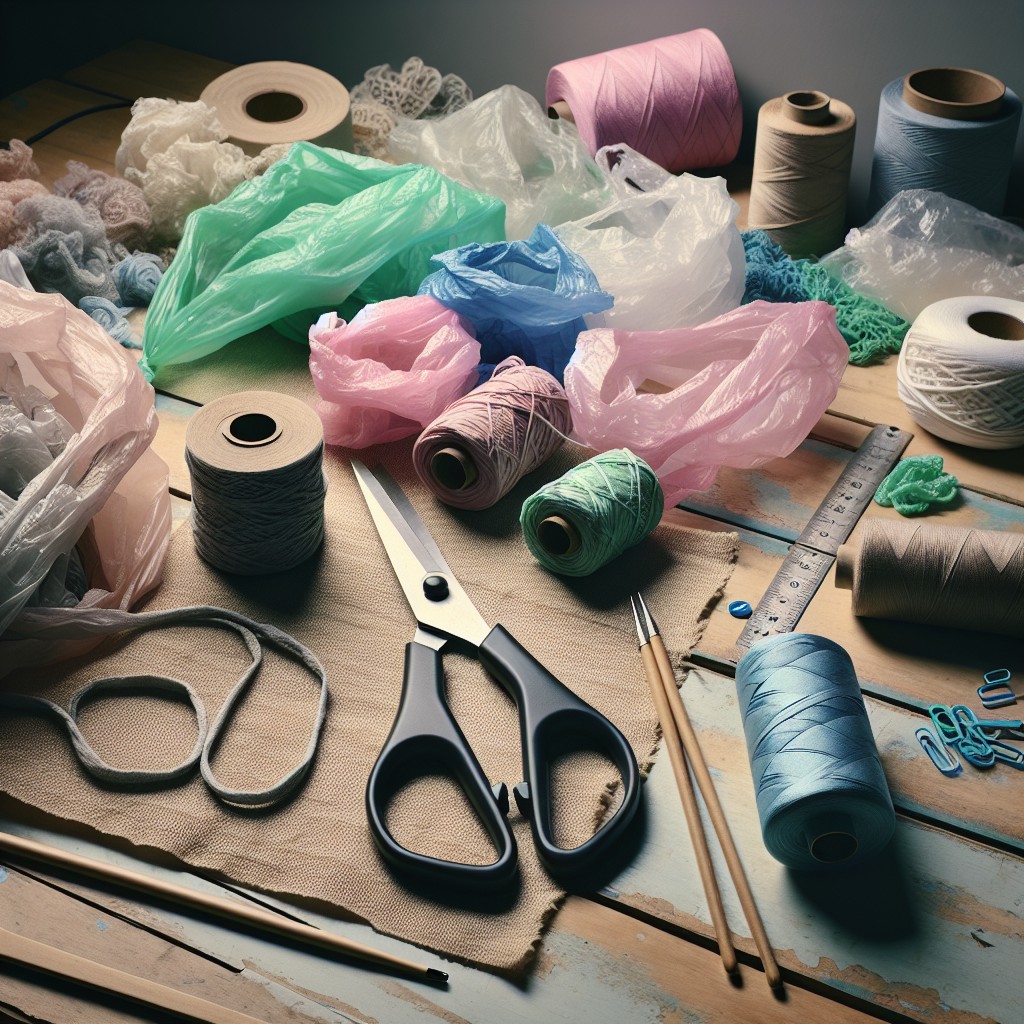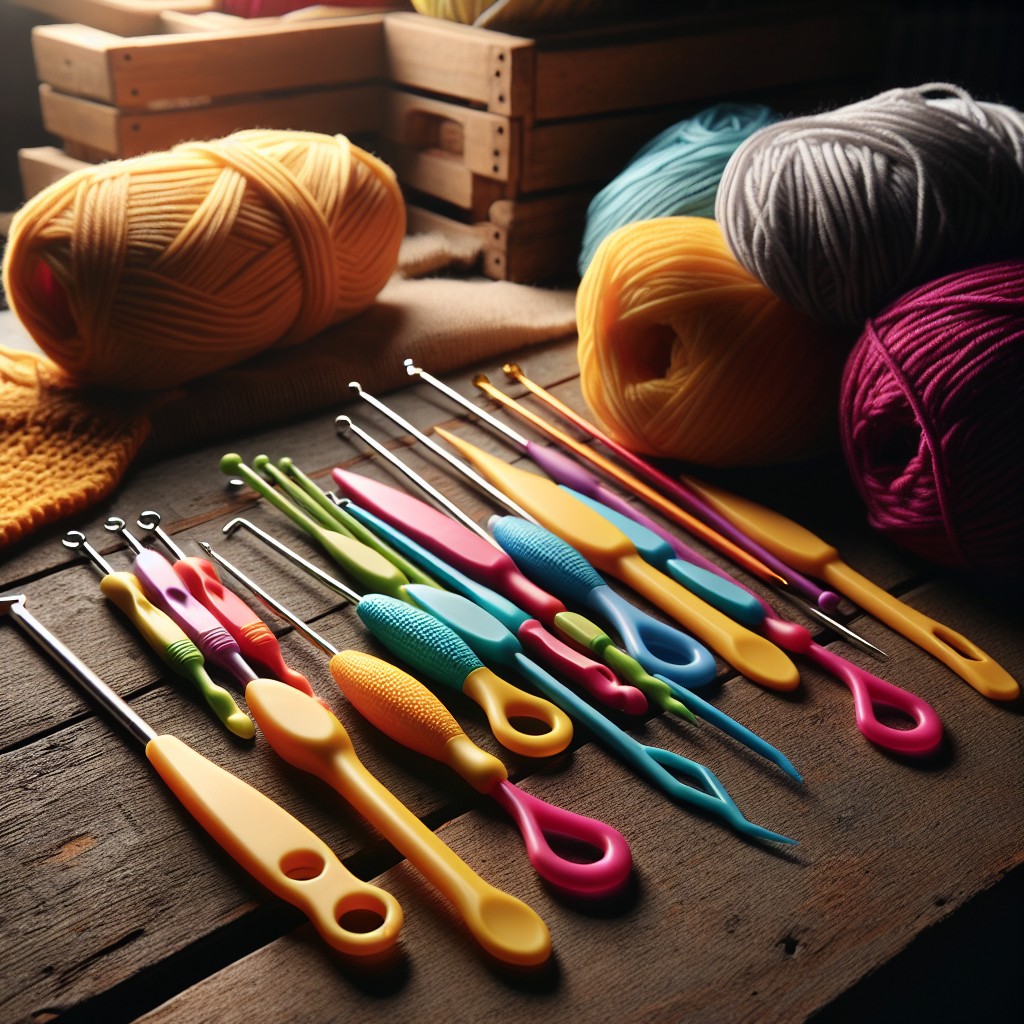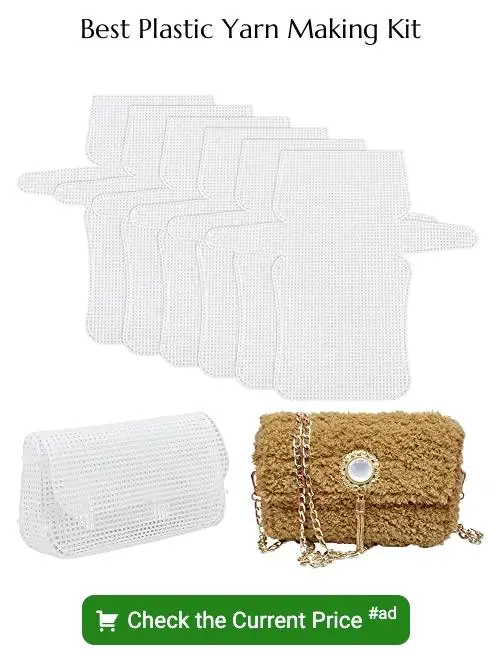Dive into the world of sustainable crafting because making plastic yarn, otherwise known as ‘plarn’, provides an innovative method to recycle unwanted plastic bags into durable, reusable material.
Creating plastic yarn, also known as “plarn”, is a unique and eco-friendly way to repurpose plastic bags. This innovative material can be used for knitting, crocheting, and other yarn crafts, turning what might have been waste into something beautiful and functional.
To make plarn, you’ll need a collection of plastic bags, a pair of scissors, and a bit of patience. The process involves cutting the bags into strips and then joining these strips together to create a pliable, durable yarn.
This article will provide a step-by-step guide on how to make plastic yarn, ensuring you have all the details you need to embark on this sustainable crafting journey.
Key takeaways:
- Plastic yarn, or plarn, is made by repurposing plastic bags.
- You only need plastic bags and sharp scissors to make plarn.
- Flatten, cut, and join plastic bags to create plarn.
- Two popular methods for cutting the bags are the Slit Skirt Method and the Spiral Method.
- Plarn has various practical uses, such as making bags, mats, baskets, and crocheted items.
Materials for Making Plastic Yarn

You will only need two essential items to start your therapeutic foray into plastic yarn or ‘plarn’ crafting. The first is an assortment of plastic bags, typically grocery or shopping bags. The color and design may vary according to your personal preference and the desired outcome. It is advised to exclude bags with significant print as the ink can stain your hands or tools.
The second material is a pair of sharp scissors. Preferably choose a pair that is comfortable to hold and easy to manipulate, ensuring you have maximum control over your cuts. In essence, your bag selection and cutting tool will dictate the quality and appeal of your resulting plastic yarn.
Tools Needed for Plastic Yarn Making

To get started with making plastic yarn, or “plarn” as it’s commonly known, a few essential tools are at hand. Firstly, a pair of sharp scissors is crucial for cutting the plastic bags into strips. A dull pair of scissors can leave jagged edges and make the process more tedious.
Secondly, a ruler or measuring tape may be helpful, especially for beginners. Precise measurements (usually 1-2 inches) ensure consistent width of your plastic strips, resulting in uniform plarn. However, with some practice, many crafters can eyeball the width without a ruler.
Lastly, having a clean, flat workspace can significantly streamline the process. It gives enough space to spread out the bags, cut them, and join the strips efficiently. Remember, organization can be the key to a smooth plarning experience!
Preparation of Plastic Bags for Yarn Conversion

Start by selecting the type of plastic bag to use. Grocery or newspaper bags work well due to their thin, pliable material. Ensure the bags are clean and free from dirt or stains to maintain the quality of your yarn.
Next, completely flatten your chosen bag. If there are handles, cut these off along with the bottom seam. For this process, a sharp pair of scissors is essential to make clean, even cuts.
Once the handles and bottom seam are removed, you’re left with the main body of the bag. This is the part used to create your yarn, known as “plarn”. Your bag should now resemble a cylinder shape, ready to be cut into loops or spirals, depending on the method you choose in the later steps.
Slit Skirt Method: Cutting Strips From Plastic Bag

Start by flattening your prepared plastic bag and trimming off the handles. Next, fold it in half lengthwise, then again, until you have one long, thin strip. Cut off the sealed end at the bottom. You’re left with a series of loops when unfolded.
You’ll slice these into strips about an inch or a bit wider, giving you links of plastic. These links can be as thin or thick as needed, depending on the project’s requirements. The key to the Slit Skirt Method is ensuring all cuts are uniform, to create consistent plastic yarn, or plarn.
Spiral Method: Creating Strips for Plastic Yarn
First, flatten the bag as much as possible, removing air. Fold it in half vertically and repeat until you have a thin, long strip. Carefully cut off the sealed bottom and handles.
What remains is a cylindrical shape. Make diagonal cuts approximately 1 inch apart along the cylinder’s length. Unfold the resulting continuous strip slowly and marvel at your spiral of plastic yarn!
Carefully roll your plarn to avoid tangles, storing it for later use. The highlight of this method is the continuous strand of yarn you get, minimizing the need for joining strips together.
Joining Plarn Strips to Finalize Your Plastic Yarn
To connect your prepared plarn strips, follow these steps:
1. Take the end of one strip and slide it under the end of another strip.
2. Have the top strip’s end passed through its own loop. This will form a knot when tightened.
3. While pulling the two ends in opposite directions, strive for a delicate balance to prevent tearing the plastic.
4. Continue this process until you link all strips, and your plastic yarn is ready.
Keep in mind that maintaining uniformity in the strip width and knot tightness is crucial as it directly impacts the finished product’s texture and strength.
Practical Uses for Your Homemade Plastic Yarn
Plastic yarn, or plarn, is not only eco-friendly but it’s also durable and waterproof, making it well-suited to a range of home and outdoors use.
1. Bag Making: Plarn is an excellent material for crafting reusable grocery or beach bags due to its sturdiness and water resistance.
2. Outdoor Mats or Rugs: Plarn works well for outdoors where moisture can be an issue; ideal for creating picnic mats, patio rugs, or even camping base layers.
3. Crafting Baskets: The rigidity of plarn is perfect for making durable baskets that can be used for storage anywhere in the home.
4. Flower Pot Decor: Plarn can be used to create decorative wraps or pot covers for adding a personal touch to plant holders within the house or garden.
5. Crocheting Items: From coasters to pot holders, plarn can be a fun, versatile substance to add to your crocheting repertoire.
These applications are just the surface. With a bit of creativity, the practical possibilities of plarn are clearly endless.
FAQ
Can you make plastic into yarn?
Yes, it is possible to make yarn from plastic by converting old plastic shopping bags into plarn (plastic yarn) using various techniques such as the spiral and the "slit skirt" method.
What is plastic yarn called?
Plastic yarn is commonly referred to as Plarn.
What are the various uses of plastic yarn in knitting and crocheting?
Plastic yarn, often referred to as "plarn," is utilized in knitting and crocheting to create durable, reusable items such as tote bags, mats, coasters, and other home accessories.
How does the process of creating plastic yarn impact the environment?
The process of creating plastic yarn positively impacts the environment by recycling waste plastic into a reusable material, reducing waste and potentially lessening the demand for new plastic production.
What types of plastic materials are best for making plastic yarn?
Durable and flexible plastic materials like polyethylene from shopping bags and plastic wrappers are the best for making plastic yarn.





